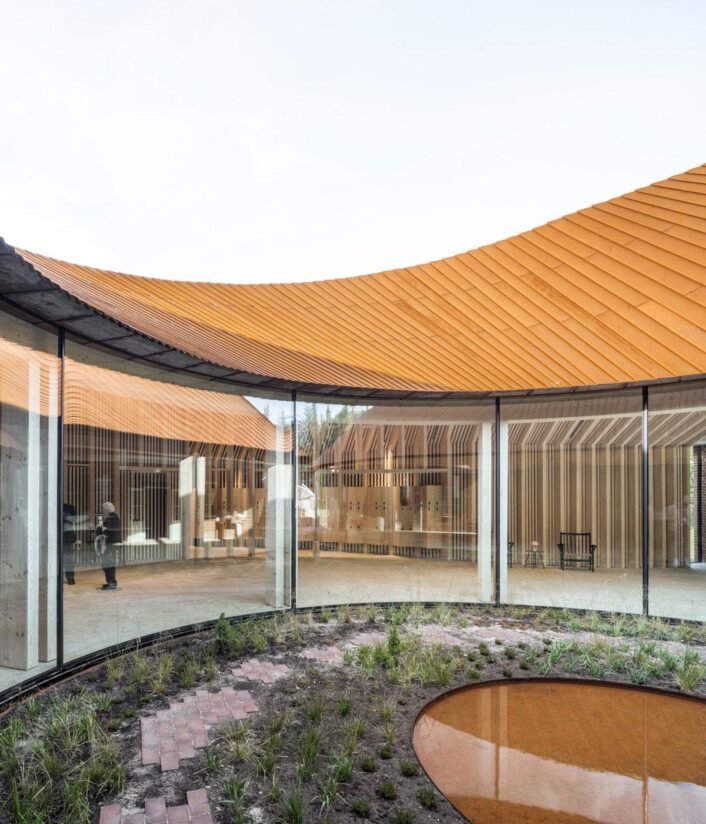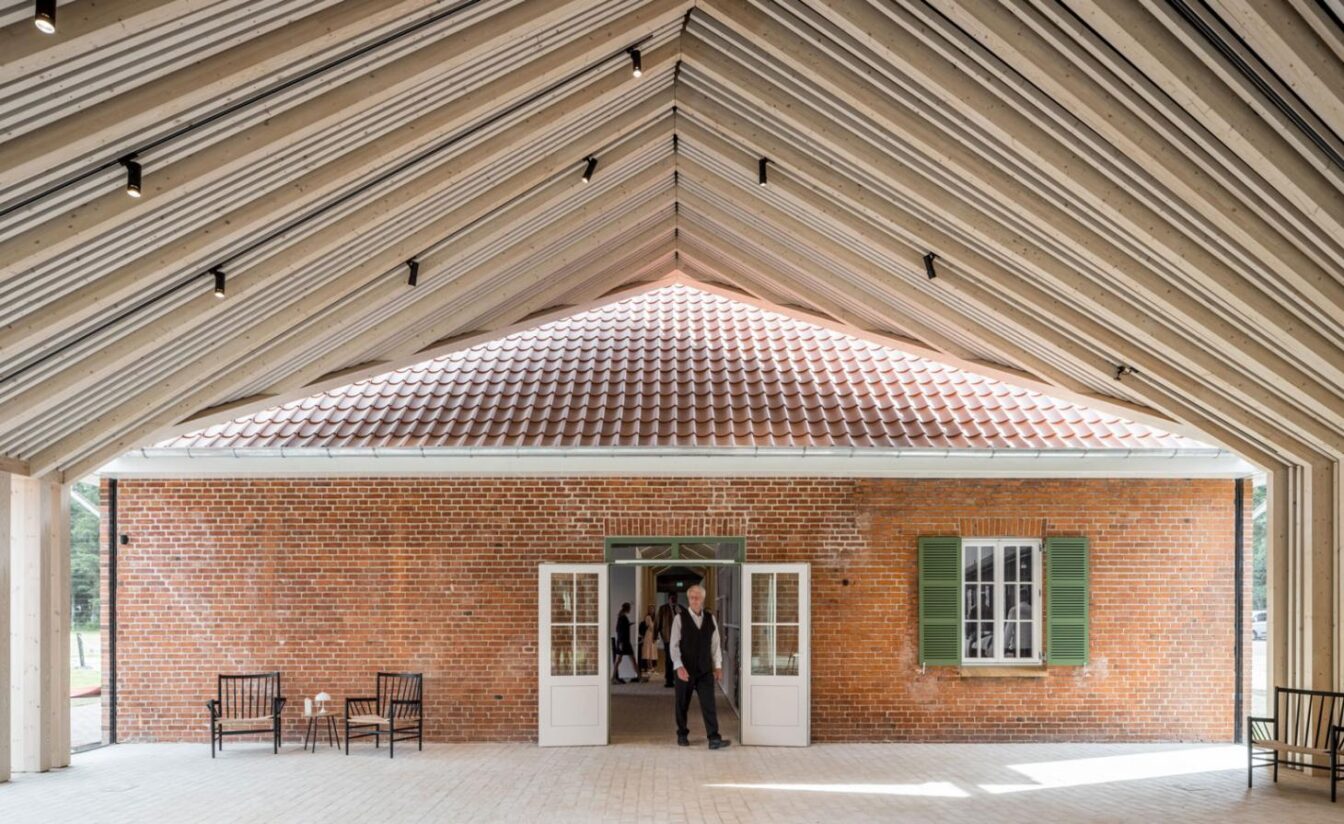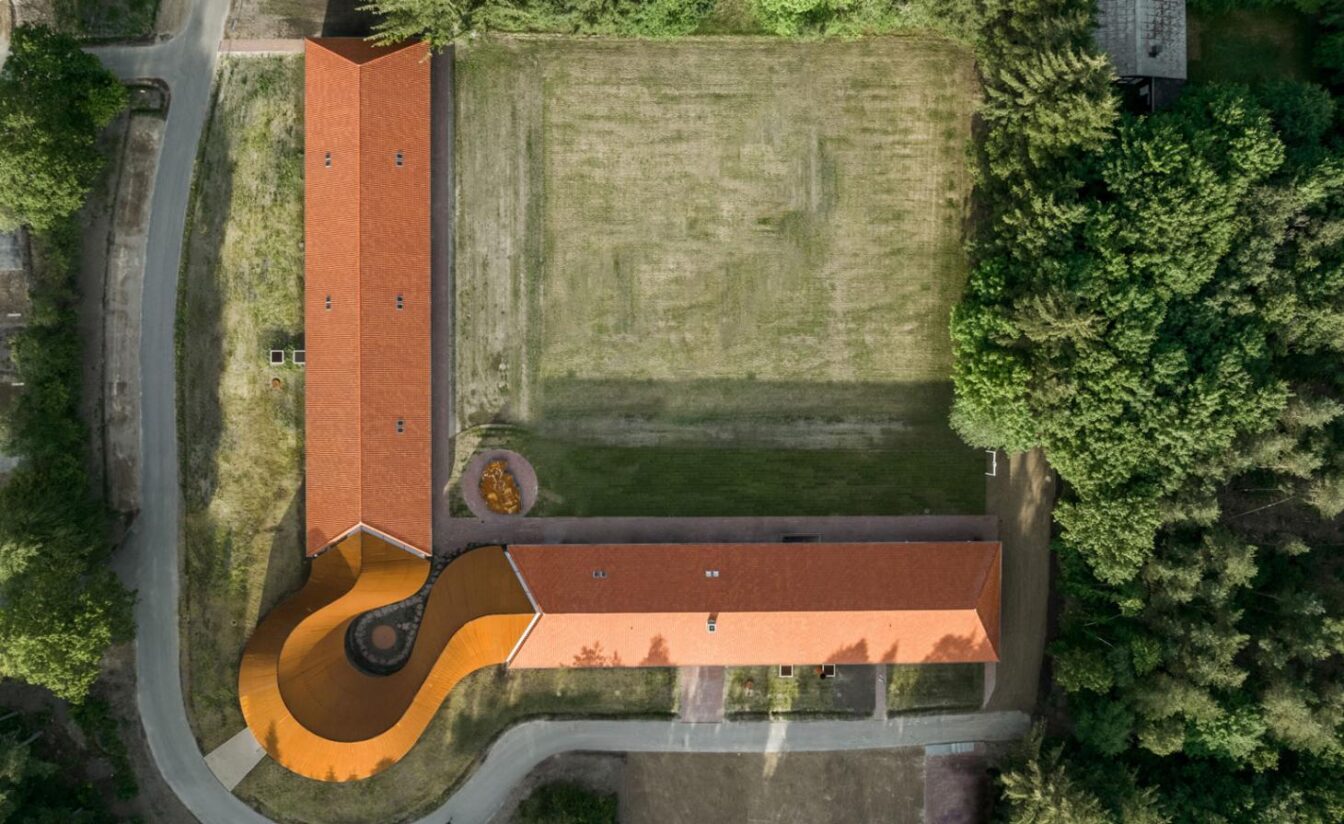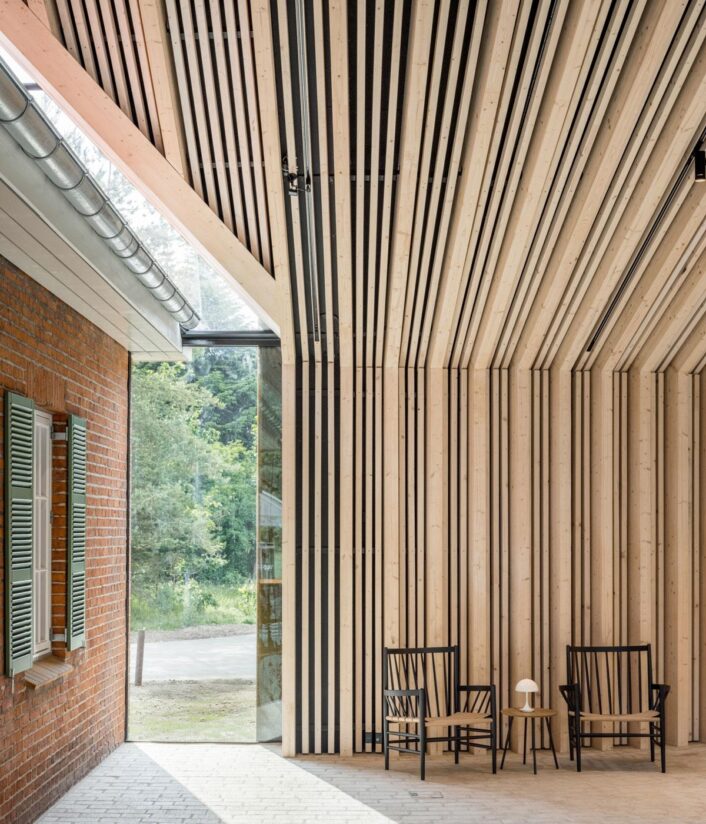BIG Designed Refugee Museum Gives Voice to the Displaced
The new Refugee Museum of Denmark, FLUGT, designed by BIG-Bjarke Ingels Group and exhibition designers Tinker Imagineers was officially inaugurated in the presence of Queen Margrethe II. The Museum has been adapted and extended from a Second World War Danish refugee camp to create the new Refugee Museum of Denmark.
Located at the site of Denmark’s largest Refugee camp from World War II, FLUGT, gives a voice and a face to refugees worldwide and captures the universal challenges, emotions, spirit and stories shared by displaced humans.
 Following the opening of Tirpitz Museum on the west coast of Denmark, FLUGT is BIG’s second museum for Vardemuseerne: a local institution dedicated to archaeology, dissemination, and collection of historical knowledge about the region. In close collaboration with engineers, Ingeniør’ne and exhibition designers, Tinker Imagineers, BIG has adapted and extended one of the refugee camp’s few remaining structures – a hospital building – into a 1,600 m2 museum.
Following the opening of Tirpitz Museum on the west coast of Denmark, FLUGT is BIG’s second museum for Vardemuseerne: a local institution dedicated to archaeology, dissemination, and collection of historical knowledge about the region. In close collaboration with engineers, Ingeniør’ne and exhibition designers, Tinker Imagineers, BIG has adapted and extended one of the refugee camp’s few remaining structures – a hospital building – into a 1,600 m2 museum.
The former hospital, which is transformed into FLUGT, is comprised of two long buildings. BIG has connected the two buildings architecturally and historically by adding a soft curve-shaped volume which brings 500 m2 of additional space to the museum and creates a welcoming structure, visible from afar.
“FLUGT – Refugee Museum of Denmark will share and uncover the stories of the largest refugee camp in Denmark as well as the story of the lived refugee experience of our time. FLUGT seeks to give a voice and a face to humans who have been forced to flee their homes and capture the universal challenges, emotions and nuances shared by refugees then and today,” says Claus Kjeld Jensen, Museum Director.
At its peak, the camp became the fifth-largest city of Denmark at the time. Today, little of the camp in Oksbøl remains, but the story of arriving at the doorstep of a new country is as relevant as ever.
The curved volume at the entrance is gently pulled towards the street to create an inviting arrival moment for the museum visitors. Clad in Corten steel, the structure feels at home along the red bricks of the former hospital buildings. From outside, the abstract volume welcomes visitors into what appears to be a closed entry hall. Upon entering, a floor-to-ceiling curved glass wall reveals a view of a sheltered green courtyard and the forest, where the refugee camp used to be. The courtyard lets light flow into the entry hall that functions as a lobby or a temporary exhibition space for guests to experience before continuing their journey into one of the museum wings.
 “The Refugee Museum of Denmark explores an important part of our history and a theme that is more relevant than ever, with millions of refugees currently displaced from their homes. We have designed an architectural framework that connects the past with the present – with a new building directly shaped by its relationship to the historic hospital buildings of the WWII refugee camp. We went into this project with all our heart to address one of the world’s greatest challenges – how we welcome and care for our fellow world citizens when they are forced to flee. The project is a continuation of our collaboration on Tirpitz Museum with Vardemuseerne and Claus Kjeld Jensen whose uncompromised design vision once again inspired our design for FLUGT,” says Bjarke Ingels, Founding Partner, BIG.
“The Refugee Museum of Denmark explores an important part of our history and a theme that is more relevant than ever, with millions of refugees currently displaced from their homes. We have designed an architectural framework that connects the past with the present – with a new building directly shaped by its relationship to the historic hospital buildings of the WWII refugee camp. We went into this project with all our heart to address one of the world’s greatest challenges – how we welcome and care for our fellow world citizens when they are forced to flee. The project is a continuation of our collaboration on Tirpitz Museum with Vardemuseerne and Claus Kjeld Jensen whose uncompromised design vision once again inspired our design for FLUGT,” says Bjarke Ingels, Founding Partner, BIG.
 The exhibition area in the north wing contains gallery spaces organised according to the original flow/circulation in the hospital. While most of the hospital room walls were torn down, some of the inside walls are kept intact and stabilised by three cross sections, creating larger exhibition spaces. The south wing features a flexible conference room, smaller exhibition spaces, cafe, and back of house functions with the same character and materiality as in the north wing: white walls and intersections covered in white painted wood boards oriented according to the angle ceiling line, as well as yellow bricks across the entire museum floor, connecting past and present structures.
The exhibition area in the north wing contains gallery spaces organised according to the original flow/circulation in the hospital. While most of the hospital room walls were torn down, some of the inside walls are kept intact and stabilised by three cross sections, creating larger exhibition spaces. The south wing features a flexible conference room, smaller exhibition spaces, cafe, and back of house functions with the same character and materiality as in the north wing: white walls and intersections covered in white painted wood boards oriented according to the angle ceiling line, as well as yellow bricks across the entire museum floor, connecting past and present structures.
In addition to preserving and reusing the hospital buildings for historical value, extending the lifespan of the existing structures supports BIG’s mission of reducing waste, conserving resources, and creating a smaller carbon footprint as it relates to materials manufacturing and transport.
“From the very beginning of the design process, it was vital for us and our client Vardemuseerne to preserve the two hospital buildings. The buildings are some of the last remaining physical manifestations of the former refugee camp, and not only is their preservation invaluable for future generations to understand the past and the present, the buildings also directly informed our design of the extension by means of their unique elongated form, structure and materiality. FLUGT is a great example of how adaptive reuse can result in sustainable, functional buildings that preserve our shared history while standing out architecturally,” says Frederik Lyng, Project Manager, BIG.
The courtyard designed by BIG Landscape creates a peaceful sensory experience inside the museum as well as outside. A small mirror pool in the heart of the courtyard reflects the sky above it. Around the basin, heath planting known from the region emphasizes the identity of the area. Visitors leave the museum having experienced a part of an important place in Danish history, with a new perspective on the refugee experience.
Name: FLUGT
Size: 1600 m2
Location: Oksbøl, Denmark
Client: Vardemuseerne
Project type: Culture
Collaborators: Ingeniør’ne, Tinker Imagineers, BIG Landscape, BIG Ideas, Gade & Mortensen Akustik, HB Trapper
PROJECT TEAM
Partners-in-Charge: Bjarke Ingels, Ole Elkjær-Larsen, Finn Nørkjær
Project Leader: Frederik Lyng
Project Architect: Frederik Skou Jensen





